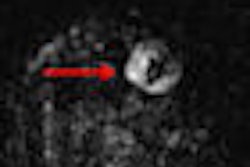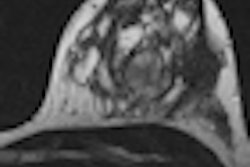How to address ductal carcinoma in situ (DCIS) has become one of the most controversial topics in breast screening. Is treating DCIS really reducing breast cancer mortality -- or is it leading to false positives and overdiagnosis? Those were two of the questions posed at last week's National Conference on Breast Cancer (NCBC).
The discovery of DCIS -- breast cancer that hasn't yet spread beyond the milk duct into surrounding healthy breast tissue -- has certainly contributed to overdiagnosis. And 40 years of searching for the calcifications that signal the disease has reduced death from breast cancer only by about 12%, according to a presentation given April 13 at the NCBC meeting, which was sponsored by the American College of Radiology.
Prior to the introduction of screening mammography, 99% of all breast cancers were invasive, said presenter Dr. Handel Reynolds of Radiology Associates of Atlanta. Reynolds' book, The Big Squeeze: A Social and Political History of the Controversial Mammogram (Cornell University Press), will be released in July.
"DCIS accounted for 1% to 2% of cancer cases before the advent of screening mammography," he said. "Since we've begun screening, there's been a 700% increase of DCIS. Twenty-five percent of all newly diagnosed breast cancer is DCIS; sometimes that figure can be up to 50%. The reason for this is because DCIS and mammography were made for each other: DCIS is nonpalpable, asymptomatic, but it often appears as microcalcifications on mammography."
New test, new problem?
Overdiagnosis is the diagnosis of a cancer that, without screening, would not necessarily have become clinically evident in a patient's lifetime, Reynolds said. Overdiagnosis is an unavoidable consequence of cancer screening, but is particularly problematic in breast and prostate cancer screening.
"The thing about DCIS is, because we don't have good evidence about how it behaves naturally, when we first started finding it, everyone was treated -- usually with a mastectomy," he told AuntMinnie.com. "It's widely believed that if DCIS is left untreated, probably about a third of women would develop invasive cancer. So we find a lot of them, but since we don't have a good way of distinguishing which ones will progress and which will not, all patients get treated -- which brings up the issue of overdiagnosis."
There are 50,000 to 60,000 new DCIS cases annually, Reynolds said. One in 1,300 screening mammograms results in a diagnosis of DCIS, and there are currently 500,000 women living with DCIS in the U.S. And 96% of all screening-detected DCIS lesions contain calcium.
But what is DCIS's actual biological significance? The 10-year DCIS breast cancer mortality rate is 2%, according to Reynolds; the majority would not progress to invasive cancer. Reynolds cited a number of studies that suggest this.
One such study was published in the Journal of the National Cancer Institute and found that "North American screening programs appear to interpret a higher percentage of mammograms as abnormal than programs from other countries without evident benefit in the yield of cancers detected per 1,000 screens, although an increase in DCIS detection was noted" (JNCI, September 2003, Vol. 95:18, pp. 1384-1393).
The current approach to the disease in the U.S., as well as improved screening technology, drives DCIS overdiagnosis, Reynolds told session attendees.
"Our current approach is that as much as possible, DCIS should be found, and that finding and treating DCIS today prevents invasive cancer later," he said. "There are also medicolegal considerations, which push high screening recall rates in this country. And finally, new imaging technology, such as computer-aided detection and full-field digital mammography [can drive overdiagnosis]."
Reynolds cited two studies that compared DCIS detection rates between full-field digital mammography (FFDM) and film-screen mammography: In 2011 De Gelder et al found the rates to be 12% and 7%, respectively; in 2008 Vigeland et al found the rates to be 21% and 11%, respectively (Preventive Medicine, September 2011, Vol. 53:3, pp. 134-140 and European Radiology, January 2008, Vol. 18:1, pp. 183-191).
How can DCIS overdiagnosis be reduced?
There should be less emphasis on "fishing" every case of DCIS out of the natural "reservoir," Reynolds said, which is what one study found to be 39% of women between the ages of 40 to 49 (British Journal of Cancer, December 1987, Vol. 56:4, pp. 707-919).
"We need to deemphasize DCIS detection in the development and implementation of new imaging technologies and encourage a research focus on genetic markers to determine which cases of DCIS -- particularly low-grade disease -- require any treatment. The more we understand the pathway from normal tissue to invasive cancer, the better our screening will be."




















